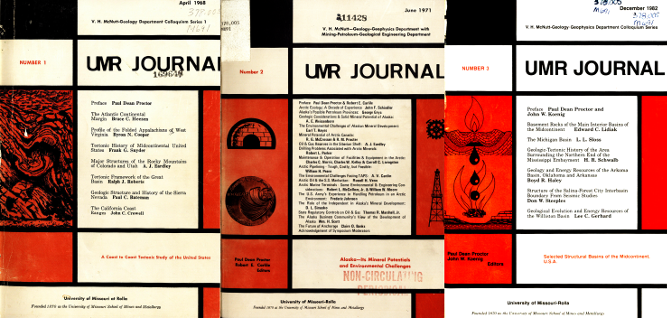UMR Journal -- V. H. McNutt Colloquium Series

Publication Date
01 Jun 1971
Abstract
Petroleum is the major Alaskan source of energy immediately available to the United States. Petroleum accounted for 89 percent or about $219 million of Alaska’s total mineral production in 1969 estimated at nearly $245 million.
Alaska’s first oil field was discovered at Katalla in 1902. About 154,000 barrels of oil were produced from 1902 to 1933. From 1945 through 1952, 45 shallow core tests and 36 test wells were drilled in and adjacent to Naval Petroleum Reserve No. 4 in northern Alaska. Oil deposits with possible reserves of 72 to 112 million barrels and gas deposits with possible reserves of over 300 billion cubic feet were discovered. In 1957 oil and gas were discovered in Cook Inlet. The reserves are estimated at 1.5 to 2.6 billion barrels of oil in place and about 5 trillion cubic feet of gas. The discovery of oil at Prudhoe Bay in northern Alaska was announced in 1968 and the reserves were estimated at 5 to 10 billion barrels. Speculative reserve figures as high as 40 billion barrels of oil at Prudhoe Bay and 100 billion in Arctic Alaska have been published.
Future prospects for petroleum in Alaska appear to be best in northern Alaska, Cook Inlet, Gulf of Alaska, and continental shelf regions.
Document Version
Final Version
File Type
text
Language(s)
English
Rights
© 1971 University of Missouri--Rolla, All rights reserved.
First Page
11
Last Page
18
Recommended Citation
Gryc, George
(1971)
"Alaska's Possible Petroleum Provinces,"
UMR Journal -- V. H. McNutt Colloquium Series: Vol. 2, Article 4.
Available at:
https://scholarsmine.mst.edu/umr-journal/vol2/iss1/4
Included in
Geology Commons, Geophysics and Seismology Commons, Mining Engineering Commons, Petroleum Engineering Commons


